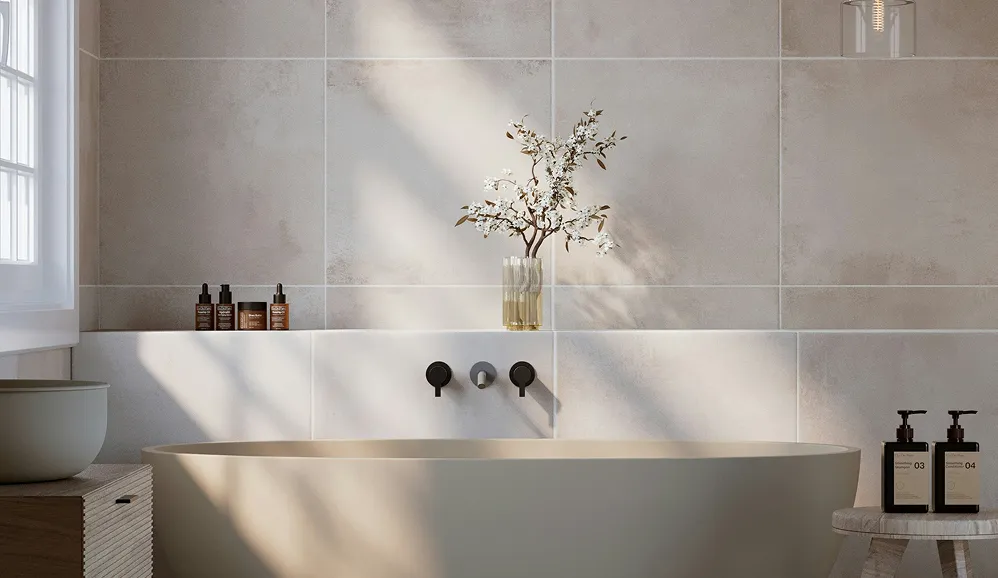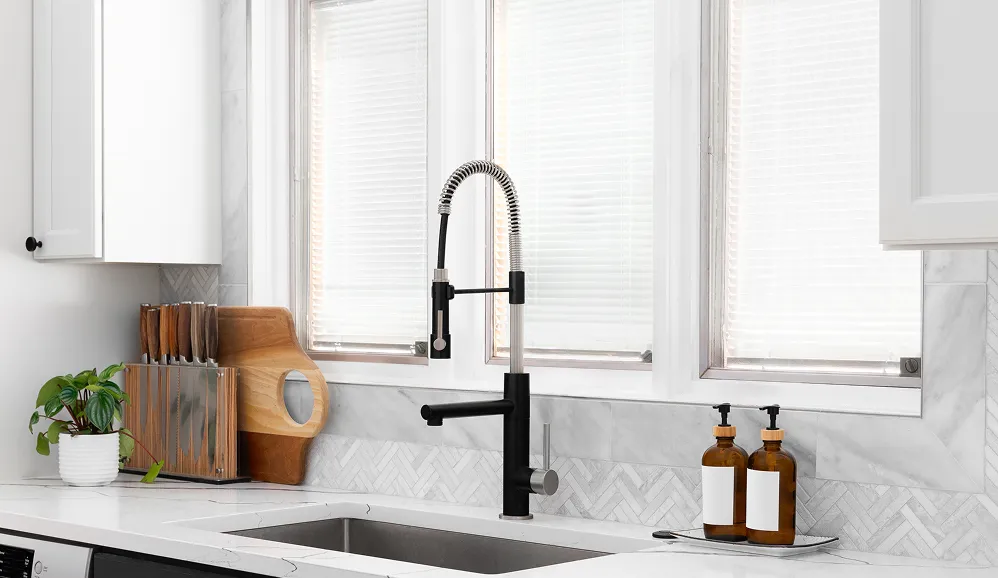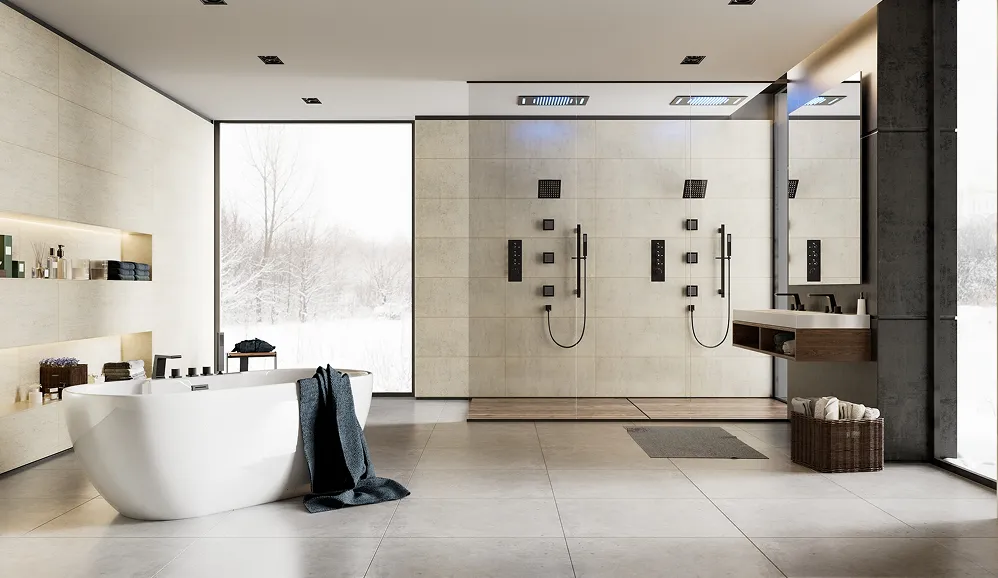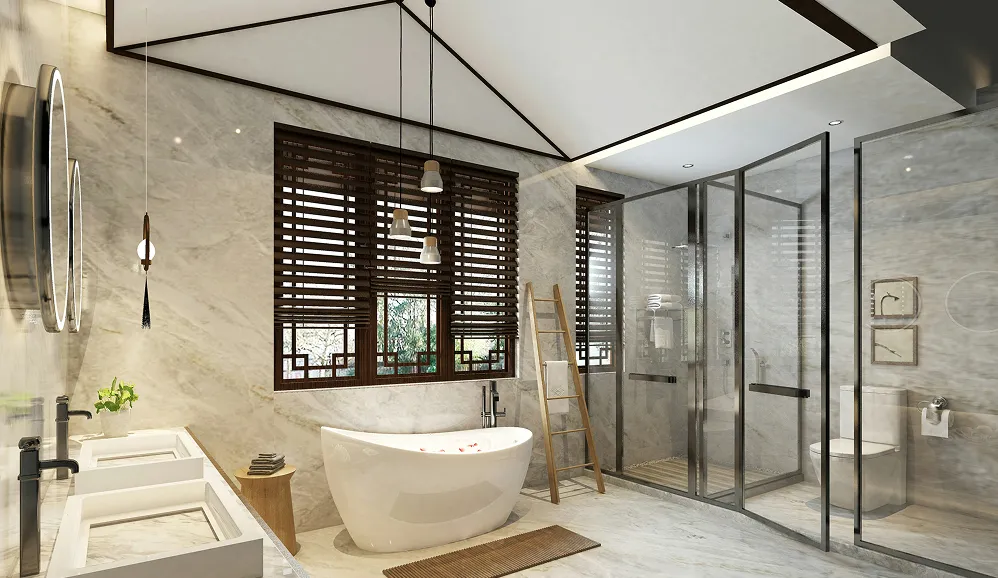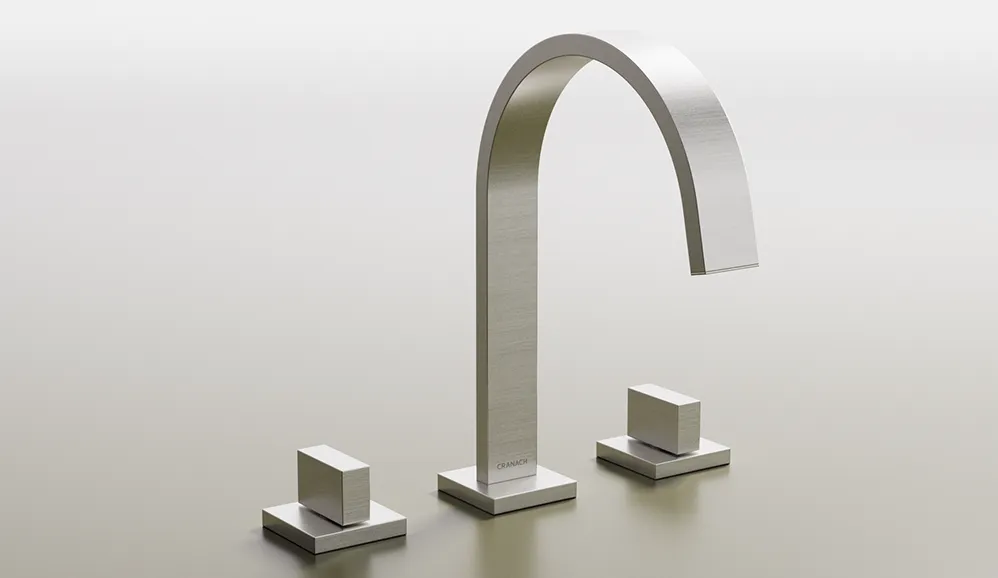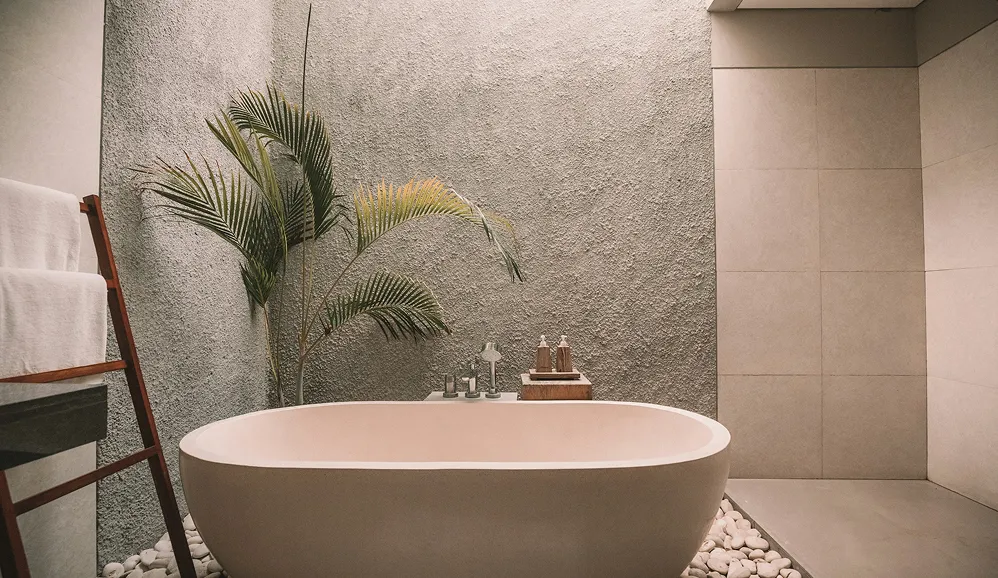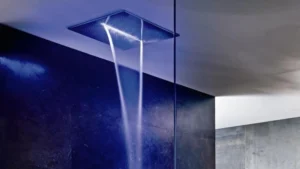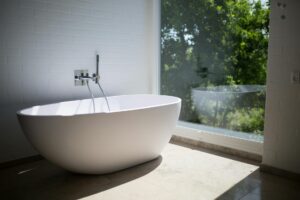Figuring out how much to remodel a shower really starts with getting a handle on the numbers. For a simple refresh, you’re likely looking at a cost between $1,500 and $4,000. If you’re planning a more substantial mid-range project, the budget typically lands somewhere between $5,000 and $10,000. And for a full-blown luxury remodel, it’s not uncommon to see costs climb well over $12,000. These ranges give you a realistic starting point for planning.
Your Quick Guide to Shower Remodel Costs
Starting a shower remodel is an exciting prospect, but the final price tag can swing wildly. It’s a lot like buying a car. You could go for a dependable, no-frills model that does its job perfectly well. Or, you might want a mid-range option with a few more comforts and upgrades. Then there’s the high-end luxury vehicle, loaded with every premium feature you can imagine.
Your shower remodel works the exact same way. The total cost comes down to three main things: how much you’re changing, the materials you pick, and how complex the job is. A simple facelift might just mean swapping out a showerhead and re-caulking. A total gut renovation, on the other hand, involves tearing everything back to the studs, maybe moving plumbing lines, and installing intricate custom tile.
Understanding the Cost Tiers
Let’s break down what your money actually gets you. Industry data from sources like the National Kitchen & Bath Association (NKBA) gives us a pretty clear picture based on what you want to achieve. A basic refresh, for example, usually just covers the essentials like new fixtures and maybe some light resurfacing work.
Step up to a mid-range remodel, and you’re talking about new tile for the walls and floor, a nice frameless glass door, and maybe even a built-in shower niche. At the luxury level, the sky’s the limit. This is where you see things like custom stonework, moving plumbing to create a totally new layout, and installing an advanced multi-function shower system.
Thinking about your project in these tiers is the best way to match your budget to your vision. It helps you see where you can save and where you might want to splurge. Before we dig into the nitty-gritty of what drives costs up, take a look at our guide on how much to remodel a shower for a deeper dive into the financial side of things.
Shower Remodel Cost Tiers at a Glance
To make it even clearer, I’ve put together a table that lays out what you can generally expect at each budget level. Think of this as a quick cheat sheet.
| Remodel Tier | Average Cost Range | Typical Inclusions |
|---|---|---|
| Basic Refresh | $1,500 – $4,000 | New showerhead and controls, regrouting or caulking, new shower curtain or a basic door, and minor tile repair. |
| Mid-Range Remodel | $5,000 – $10,000 | New tile walls and floor, a frameless glass door, an upgraded shower system, new lighting, and possibly a niche installation. |
| Luxury Overhaul | $12,000+ | Custom tile or stone slabs, relocating plumbing, adding bench seating, high-end fixtures like a CRANACH shower system, steam features, and smart controls. |
This breakdown should give you a solid idea of where your own project might fall. It’s all about balancing your must-haves with your budget to create a space you’ll love.
What’s Really Driving the Cost of Your Shower Remodel?
Ever get sticker shock looking at shower remodel quotes? One contractor might say $3,000, while another quotes over $15,000. It’s a huge range, and it leaves a lot of homeowners scratching their heads. So, what’s behind these wild price swings?
The final cost of your shower remodel essentially boils down to three main things: the materials you choose, the labor required to install them, and just how big of a project you’re taking on. Getting a grip on how these three factors work together is your first step toward creating a budget that makes sense. After all, just swapping out an old showerhead is a world away from tearing everything down to the studs and starting fresh.
Let’s break down these core cost drivers so you can see exactly where your money goes and make smarter decisions for your project.
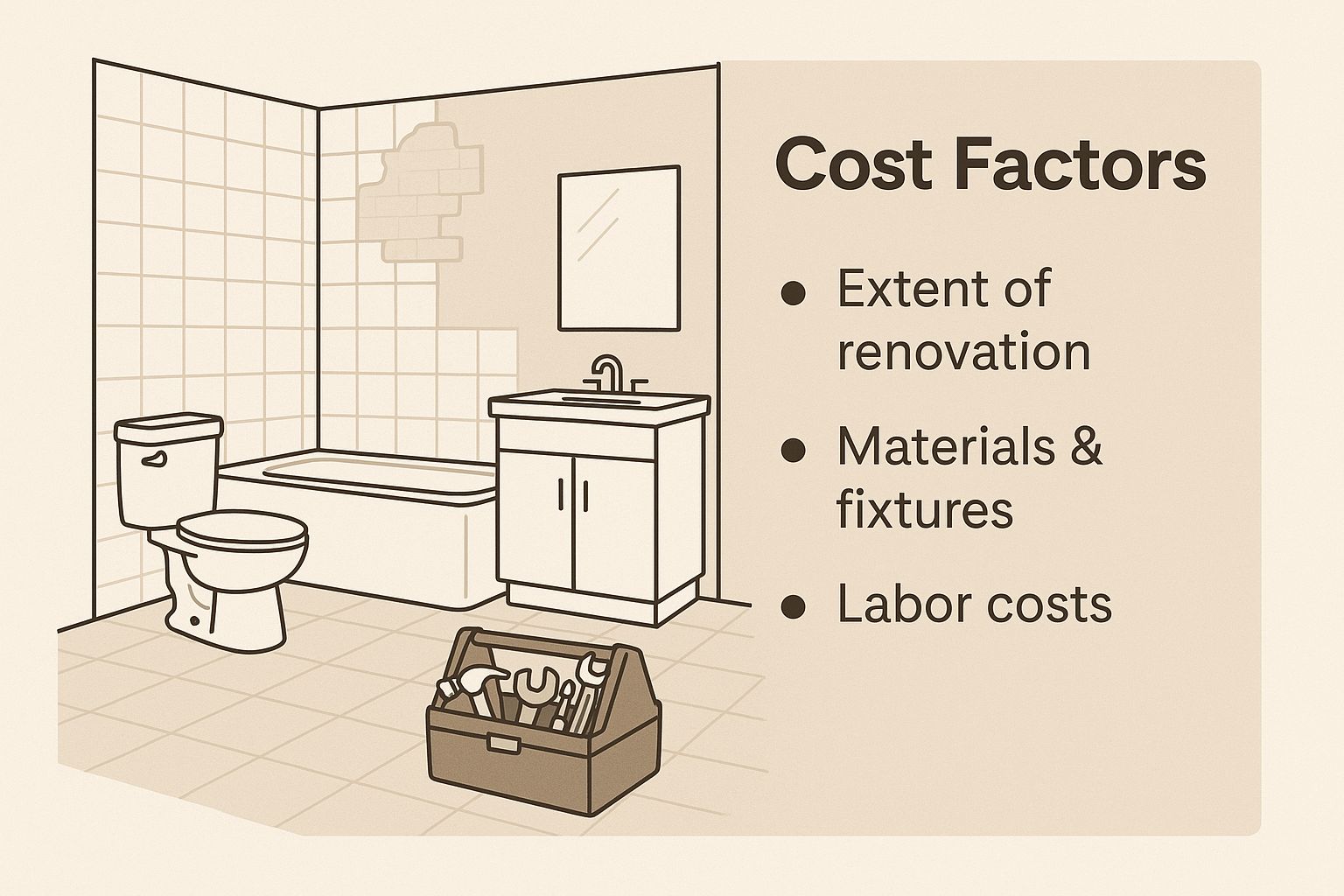
As you can see, the complexity of the job, the quality of your materials, and the professional expertise needed are the true building blocks of your total cost.
Project Scope and Complexity
The single biggest factor that determines your final bill is the scope of the work. Are we talking about a simple cosmetic facelift or a full-blown gut renovation? The financial difference between the two is massive.
Here are the main things that can inflate the price based on your project’s scope:
- Demolition: Before anything new can go in, the old stuff has to come out. Ripping out the old shower, tile, and fixtures is step one. While some handy homeowners tackle this themselves, hiring a pro ensures it’s done safely and without accidentally wrecking something important.
- Moving the Plumbing: Want to keep your budget in check? Leave the plumbing right where it is. The moment you decide to move the drain, showerhead, or control valves, your costs jump. This requires a licensed plumber to open up walls and floors to reroute pipes—a significant labor expense.
- Structural Changes: If you’re dreaming of a bigger shower, a new wall, or custom features like a built-in bench or storage niche, you’re getting into structural work. This means extra framing, materials, and labor to make it happen.
- Waterproofing: This is the one area where you absolutely cannot cut corners. Proper waterproofing, whether it’s a membrane or a liquid-applied barrier, is the unseen hero that protects your home from leaks and mold. Skimping here is a recipe for disaster and will lead to far more expensive repairs down the road.
Material and Fixture Selection
This is where your personal style—and your budget—really come into play. Your choice of materials and fixtures defines the look and feel of your new shower, and it can send your costs in very different directions.
On one end, you have budget-friendly options like a standard prefabricated acrylic shower kit. On the other end of the spectrum, you could opt for custom tile work with high-end materials like natural stone or intricate mosaics, which can be quite expensive.
Beyond the walls and floor, the fixtures themselves are a huge part of the equation. The centerpiece of any great shower is the shower system. A basic, single-function showerhead is cheap, but upgrading to a premium, multi-function shower system is an investment that pays off in daily comfort and adds real value to your home.
Labor Costs and Professional Expertise
Unless you’re a seasoned DIY pro, labor will be a huge chunk of your budget, often making up 40-60% of the total project cost. A full shower remodel is rarely a one-person job; it usually takes a team of skilled tradespeople. You’ll likely need a general contractor to manage everything, a plumber for the pipes and fixtures, a tiler for the surfaces, and maybe even an electrician if you’re adding new lighting.
The national averages really show this variability. A typical shower remodel lands around $7,000, but that’s just an average. Projects can range from a modest $2,000 to well over $9,000. If you’re going for a custom shower with high-end tile and moving plumbing around, you can easily add another $1,500 to $3,500 or more, pushing those luxury projects closer to the $14,000 mark.
To get a better feel for how these factors might play out for your specific vision, you can explore more detailed cost breakdowns. For a deeper dive, check out our guide on what influences the cost of a shower remodel.
Choosing Your Shower Materials and Fixtures
Alright, let’s get to the fun part: picking out the materials and fixtures that will define your new shower. This is where you get to put your personal stamp on the space, turning it from just a place to get clean into your own private retreat. It’s also the stage where your budget can quickly get out of hand if you’re not careful.
The choices you make here are a balancing act between the look you want, how long you want it to last, and what you’re willing to spend. These decisions are the biggest drivers behind the final answer to how much to remodel a shower.
Think of your shower walls and floor as the canvas for your masterpiece. From timeless tile to sleek, modern kits, every option has a different price tag and its own set of strengths and weaknesses.
Shower Walls and Floors: The Foundation of Your Design
The first big decision most people tackle is the shower surround. According to the National Kitchen & Bath Association (NKBA), ceramic and porcelain tiles are still king in the bathroom world, and for good reason—they’re incredibly versatile and tough. But they aren’t your only option.
Here’s a look at the most common choices:
- Ceramic and Porcelain Tile: These are the reliable workhorses of any shower remodel. Porcelain is a step up from ceramic; it’s denser and less porous, making it practically waterproof and incredibly durable. The real win? Both come in an endless variety of colors, sizes, and textures, giving you total creative freedom.
- Natural Stone: If you want pure, unmatched elegance, materials like marble, granite, or slate deliver a beautiful, organic look that’s unique to your shower. Be prepared, though—this luxury comes with a premium price tag and requires regular sealing to keep it from staining or absorbing water.
- Prefabricated Kits: For those on a tighter budget, acrylic and fiberglass shower units are fantastic. They’re installed as large, seamless panels or even as a single piece. This drastically cuts down on installation labor and, best of all, means no grout lines to scrub.
Expert Tip: One of the biggest regrets I hear from homeowners is choosing small, busy tiles for their shower. While they might look great at first, all those grout lines become a breeding ground for mildew and a real pain to keep clean. Do yourself a favor and consider larger format tiles—you’ll have far less grout and a much easier time with maintenance.
To make sense of it all, it helps to see the options laid out side-by-side. This table breaks down the cost, durability, and upkeep for the most popular materials.
Comparing Common Shower Wall Materials
This table compares popular shower materials on cost per square foot, durability, and maintenance to help you choose the best fit for your budget and lifestyle.
| Material Type | Average Cost (per sq. ft.) | Durability | Maintenance Level |
|---|---|---|---|
| Ceramic Tile | $12 – $40 | Good to High | Moderate (grout needs cleaning) |
| Porcelain Tile | $15 – $50 | Very High | Low to Moderate |
| Natural Stone | $25 – $100+ | High (but can be porous) | High (requires regular sealing) |
| Acrylic/Fiberglass Kit | $8 – $30 | Good | Very Low |
Choosing the right material is a personal decision. If you love a custom look and don’t mind a little upkeep, tile is a fantastic choice. If you prioritize easy cleaning and a lower upfront cost, a prefabricated kit might be the perfect solution.
The Heart of the Shower: Your Shower System
While the walls set the stage, the shower system is the functional heart of your remodel. This is more than just a showerhead; it’s the combination of fixtures that defines your daily experience. Frankly, upgrading from a basic, builder-grade fixture to a quality shower system is one of the best investments you can make in your bathroom.
A high-end shower system often includes features that feel like a true luxury:
- Thermostatic Valve: This is an absolute game-changer. It keeps the water at a constant, precise temperature. No more surprise blasts of icy cold or scalding hot water when someone flushes a toilet or starts the dishwasher.
- Multiple Functions: Why settle for one spray pattern? A good system might include a large, drenching rain shower head, a flexible handheld sprayer (great for rinsing and cleaning), and even invigorating body jets.
- Water Efficiency: Don’t assume more features mean more water waste. Modern systems are brilliantly engineered to give you a powerful, satisfying spray while actually conserving water, which is a nice bonus for your utility bills.
Pulling It All Together: Fixtures and Finishes
Beyond the main shower system, a few other key fixtures will shape the final look and cost. The shower door is a big one. A simple shower curtain is your most budget-friendly route. A step up is a standard framed glass door, while a heavy, frameless glass enclosure offers that sleek, high-end look—but with a price tag to match.
The finish you choose for your fixtures also makes a huge impact. Polished chrome is a classic for a reason: it’s durable, timeless, and usually the most affordable. But trendy finishes like matte black, brushed nickel, and warm brass are incredibly popular and can add 15-30% to the fixture cost. For a deeper dive into selecting the right hardware, our guide on how to choose a bathroom faucet has some great tips that apply here, too.
Ultimately, the goal is to create a cohesive design where your tile, shower system, and accessories all work together in harmony.
Calculating Labor Costs: DIY vs. Hiring a Pro
When you’re trying to budget a shower remodel, labor is the elephant in the room. It’s not uncommon for labor alone to eat up a staggering 40-60% of your total project cost. Deciding whether to hire a team of pros or roll up your sleeves and do it yourself is probably the biggest financial choice you’ll make.
Honestly, the right path comes down to a gut check of your skills, your available time, and how much risk you’re willing to take. Bringing in a pro gives you experience and peace of mind, but you’ll pay for it. Going the DIY route can save you thousands, but one slip-up could end up costing you way more than you ever saved.
The Professional Team: What You’re Paying For
A full shower remodel isn’t a one-person job. It usually takes a small army of specialists, each with their own skill set and hourly rate. Many homeowners hire a general contractor to act as the project’s quarterback, coordinating all the different trades and making sure everything is done correctly and to code.
Here are the key players you might have on your team:
- General Contractor: They typically charge 10-20% of the total project cost. Their fee covers scheduling everyone, ordering materials, and managing the subcontractors.
- Plumber: An absolute must for any work involving pipes. You can expect to pay $75 to $150 per hour for their expertise. This is non-negotiable if you’re moving supply lines or the drain.
- Tiler: A talented tiler will charge somewhere between $10 to $20 per square foot for installation. Their skill is what ensures a beautiful, and more importantly, waterproof finish, especially if you’re using tricky patterns or large format tiles.
- Electrician: If you plan on adding or moving lights, you’ll need a licensed electrician. Their rates are usually in the same ballpark as a plumber’s.
As you can see, these costs pile up fast. For a standard, mid-range shower remodel, you could easily be looking at $4,000 to $8,000 or more just for professional labor, depending on where you live and how complex the job is.
When to Absolutely Hire a Professional
Some parts of a remodel are just too risky for even the most confident DIYer. A mistake in these key areas can lead to catastrophic water damage, hidden mold growth, and serious structural problems that are a nightmare to fix.
“A huge shower…was way more room than needed for even two people… I hated it. We only used one shower head and the tile was cold. Even with running it with the doors closed to create heat before getting in, was a waste of time and water.”
This homeowner’s story is a perfect example of how professional design and planning can prevent you from making a costly mistake you’ll have to live with every day. Here are the definite “call a pro” moments:
- Moving Plumbing: Any time you’re rerouting water supply lines or changing the drain location, you’re dealing with complex work that has to meet strict building codes. Don’t mess with this.
- Waterproofing: This is the single most critical step. A pro knows exactly how to build a completely sealed system, from the shower pan to the walls. One tiny gap can lead to a slow, silent leak that destroys your home from the inside out.
- Intricate Tile Work: If you’ve got your heart set on a complex pattern like herringbone or a detailed mosaic, you need an artist. This level of skill takes years of practice to get right.
- Installing a New Shower System: While a brand like CRANACH designs systems for straightforward installation, connecting them to new or moved plumbing is a job for a licensed plumber. You can explore the beautiful and functional shower system options to see what fits your vision.
The DIY Approach: What You Can Realistically Tackle
If you’re pretty handy and have the time to commit, taking on certain parts of the remodel yourself can save you a bundle. If you’re leaning this way, it’s a good idea to first learn how to be your own general contractor to understand what you’re getting into.
Here are the jobs that are generally safe for a DIYer to handle:
- Demolition: Tearing out old tile, backer board, and fixtures can be a fantastic way to cut costs. Just be careful not to damage any plumbing or drywall you plan on keeping.
- Painting: A fresh coat of paint on the bathroom walls is a simple, low-risk task that makes a huge impact.
- Installing Accessories: You can easily handle mounting new towel bars, toilet paper holders, and putting up a new shower curtain.
- Minor Repairs: Sometimes a full remodel isn’t even necessary. If your only issue is a nagging drip, for example, our guide on how to fix a leaky shower faucet can walk you through solving it yourself.
In the end, choosing between DIY and hiring a pro is all about balancing your budget against your skills and the scope of the project. Many people find a hybrid approach works best: hire pros for the high-stakes jobs like plumbing and waterproofing, then save money by tackling the demo and finishing touches yourself.
Smart Ways to Save on Your Shower Remodel
A stunning shower transformation doesn’t have to drain your savings. While it’s easy to get caught up in the exciting final look, the most successful remodels are built on a smart financial foundation. Figuring out how much to remodel a shower feels a lot less overwhelming when you have a solid plan to manage costs right from the start.
The single most important rule for smart budgeting? Create a contingency fund. Just think of it as your project’s financial safety net. I’ve seen it time and time again—unexpected issues are practically a given in any remodel. You might uncover hidden water damage, find old plumbing that needs a total replacement, or have a box of special-order tile show up cracked.
Set aside an extra 10-15% of your total budget for a contingency fund. If your remodel is planned for $8,000, this means having an additional $800 to $1,200 ready to go. This one simple step can turn a potential disaster into a minor, manageable hiccup.
This kind of proactive planning is more critical than ever. With a global shower replacement market valued around $1.408 billion and growing, the demand for modern, efficient materials and systems is on the rise. That means making smart financial choices is absolutely essential.
Be Strategic with Materials and Fixtures
Your choice of materials is where you can find some of the biggest savings. You can absolutely get that high-end look without the eye-watering price tag by just being a savvy shopper. For example, instead of splurging on natural marble, take a look at high-quality porcelain tiles that mimic the look beautifully. They’re often more durable, less porous, and cost a fraction of the real thing.
Sourcing your own materials is another fantastic strategy. While letting your contractor handle all the purchasing is convenient, they almost always add a markup. By shopping around for your own tile, fixtures, and accessories, you can hunt for sales, find unique deals, and keep more money in your pocket.
There’s one area, however, where you don’t want to cut corners: the shower system itself. Investing in a durable, well-made shower fixture is a smart long-term decision. A quality system will not only feel better to use every day but is also built to last, saving you from the headache and cost of premature repairs and replacements.
Think About Timing and Financial Planning
Believe it or not, when you schedule your remodel can have a real impact on the final cost. Contractors, like most businesses, have their peak seasons and their slow periods. If you have some flexibility, booking your project during their off-season (usually late autumn or winter) can often result in more competitive quotes.
It’s also always a good idea to look into financial assistance programs. For homeowners in the UK, options like the Green Homes Grant Scheme can offer valuable support for certain home improvements, so it’s worth checking if your project qualifies.
Here are a few more practical tips to keep your budget on track:
- Keep the Footprint: Moving plumbing lines is one of the most expensive things you can do in a bathroom remodel. By keeping your shower, toilet, and sink in their current spots, you can save a small fortune on labour costs.
- Get Multiple Bids: Never go with the first quote you receive. Aim to get at least three detailed bids from different contractors. This lets you compare prices and ensures you’re getting a fair rate for the job.
- Mix High and Low: Splurge on one or two high-impact features you’ll truly love—like a stunning accent tile for a shower niche or a premium shower system—and save on the elements that are less noticeable.
Answering Your Final Shower Remodel Questions
As you nail down the final details of your shower project, you’re bound to have a few last-minute questions pop up. That’s completely normal. Getting these common concerns sorted out is often the final step before you can move forward with total confidence and lock in your plans.
Let’s walk through some of the most frequent questions homeowners have. Getting clear answers here will help you feel truly ready for the work ahead.
How Long Does a Shower Remodel Take?
The timeline for a shower remodel hinges almost entirely on how big of a project it is. For a simple, straightforward swap—like putting in a new prefabricated shower stall or just updating fixtures without touching the plumbing—a pro can often knock it out in just 2 to 4 days.
But if you’re planning something more custom, you’ll need to be patient. Projects involving intricate tile work, moving plumbing, or building a new bench can easily take 7 to 10 days of active construction. And remember, that doesn’t account for the upfront time needed for designing, ordering materials, and waiting for everything to arrive. That part alone can add a few weeks to your overall schedule.
Can I Put a New Shower Over Existing Tile?
It’s a tempting thought, isn’t it? Just cover up the old tile and call it a day. While it seems like a clever shortcut to save time and money, it’s one that seasoned pros will almost always advise against.
Why? For starters, tiling over old tile can throw off your floor height, which messes with proper drainage and can even create a tripping hazard. But the real risk is what you can’t see. Tearing out the old tile is the only way for your contractor to check the wall studs for hidden water damage, make sure the surface is perfectly flat, and—most importantly—install a fresh, reliable waterproofing membrane. Skimping on that step is asking for leaks down the road.
What Is the Most Durable Material for a Shower?
When you’re talking about what will last the longest, it’s tough to find anything better than porcelain and ceramic tiles. Porcelain is a real workhorse; it’s incredibly dense and non-porous, meaning it shrugs off water, stains, and scratches like a champ. Both materials also give you a nearly endless variety of design choices.
If you’re leaning toward a prefabricated unit, look for one made from high-quality acrylic or fiberglass. These are known for being tough and are a breeze to clean since there are no grout lines. The trick is to stick with a reputable brand to make sure you don’t end up with a flimsy, cheap-feeling kit.
What Shower Upgrades Offer the Best Value?
Hands down, one of the smartest places to put your money is in a high-quality shower system. A system with a thermostatic valve is a game-changer—it keeps the water temperature perfectly steady, preventing those shocking blasts of hot or cold. And trust me, adding a handheld sprayer is a feature you’ll thank yourself for every time you clean the shower or rinse your hair.
Another upgrade that delivers a huge bang for your buck is good lighting. Installing a waterproof recessed light right above the shower makes the whole space feel bigger, brighter, and safer. It’s a relatively small touch that dramatically improves the overall atmosphere.
One thing homeowners often regret overlooking is water usage. It’s easy to get caught up in the look and feel, but a shower that guzzles water can lead to surprisingly high bills. You can learn more about how many gallons of water a shower uses in our detailed guide.
Choosing water-efficient fixtures, like those in a modern shower system, is a savvy move. You get a fantastic shower experience while also being mindful of your home’s consumption.
Ready to find the perfect centerpiece for your new shower? The CRANACH shower system combines therapeutic features with timeless design to elevate your daily routine. Explore our collection to discover the ideal fit for your remodel.

